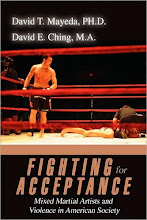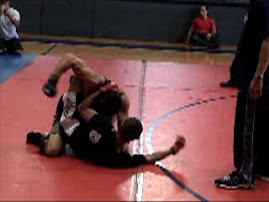Events from the past few weeks have shaken the world, not because something new or different happened, but because the world was forced to watch a particularly bothersome and lengthy image that reflected what has been happening for centuries. The power inequalities symbolized through George Floyd’s blackness and Derek Chauvin’s whiteness represent the racialized power inequalities that have flowed for so long through a range of institutional spheres – criminal justice, education, politics, work, media, and let’s not forget, sport.
As a result of sustained and intense activism, mainstream organizations across the world finally began responding supportively to the #BlackLivesMatter movement. And, a greater number of white people have started discussing the notion of white privilege in the media, including across social media.
CrossFit Headquarters, however, remained silent on the issue, that is until its then CEO, Greg Glassman responded to a Tweet regarding racism as a public health issue by writing insensitively, “It’s FLOYD-19.”, something most of us have probably seen:
On top of this, Glassman stated of Floyd's death, "We're not mourning for George Floyd, I don't think me or any of my staff are...Can you tell me why I should mourn for him? Other than it's the white thing to do."
Understanding Racism’s Layers
Before going further with an inspection of CrossFit, it’s important to understand racism. Most of us think racism is no longer systemic, built into law, and instead believe racism only materializes when extreme, fringe radicals display a swastika symbol or if someone hurls racial epithets at an ethnic minority. Of course those are examples of racism. But racism carries other elements, ones which resonate more strongly with ethnic minorities.
Again, racism reflects power inequalities. In countries like those across Western Europe, Canada, Australia, the United States (where I’m from) and Aotearoa New Zealand (where I live now), white people are the numerical majority, which gives them a dimension of power. But on average, white people are also more likely to wield institutionalized power, meaning it’s more likely for them to hold formalized leadership positions, where their decision making power disseminates across organizational spheres. Additionally, they are more likely to hold influence in mainstream media platforms.
Another important aspect of racism worth noting is that current racialized power inequalities across society reflect historical manifestations of racism. To this end, encounters with racism are not singular, unique events for ethnic minorities. They remind us of patterned inequalities that have impacted our families, friends, and communities for decades, sometimes centuries.
Racism also comes in different forms. Again, it’s not just the odd loudmouth or angry gunman targeting people of color. The more common form of racism today is called “everyday racism,” or the so-called “subtle” micro-aggressions that put down black, Indigenous and other people of color, perhaps not on literally an everyday basis, but regularly enough that clear patterns exists.
“Wow, you’re really smart for a Mexican.”
“Can I touch your hair?”
“You’re lucky for affirmative action.”
It’s also about body language, noticing people rolling their eyes at you, getting interrupted more than white peers, having to hear “minor” racist jokes, reading racist comments on the Internet, having white people belittle you online when you expose racism. Here’s another thing, white people tend not to notice these instances, and tend to be less aware these actions are in fact racist. Women can probably relate with respect to everyday sexism. If instances of everyday racism happen once a year, it’s not a big deal. But once a year isn’t reality, and dealing with everyday racism gets exhausting.
Additionally, racism gets institutionalized. As stated previously, within organizations, white people are more likely to be in authoritative positions. Thus, formal leaders are less likely to intervene when overt or everyday racism transpires; anti-racist policies are less likely to be developed (same too with anti-sexist, homophobic and transphobic policies).
Two last things before we get back to CrossFit. When an ethnic minority confronts someone about racism, it’s frequently the ethnic minority who gets called out as the trouble-maker, cast as being hyper-sensitive, because racism is supposedly only a thing of the past. Enter white privilege, a reference to the unearned benefits white people experience in majority-white societies. White privilege doesn’t mean white people don’t have to work hard, but they don’t have to overcome racism to get where they’re going, and that’s a significant form of privilege (think also heterosexual/male privilege).
What black people, Indigenous people, other people of color wish, is when we point out racism that more white people would back us up, listen to us, believe us, try to understand us. It’s much more frequently uncomfortable for us. If us pointing out racism is uncomfortable for you, don’t respond by demonstrating white fragility, doing something hurtful to us that makes it more comfortable for you. Unfortunately, we’ve recently seen white fragility manifest among CrossFit leadership.
Okay, finally, back to CrossFit.
CrossFit’s Recent White Fragility
Following Glassman’s racist Tweet, waves of criticism ensued, eventually prompting Glassman to Tweet, “…the CrossFit community will not stand for racism,” and, “My heart is deeply saddened by the pain it has caused. It was a mistake, not racist but a mistake.”
Classic white fragility. By contending that his initial comment was “not racist,” Glassman attempted to exonerate himself from any responsibility of being racist, consciously or unconsciously, thereby re-establishing his own social equilibirum. Instead, he should have admitted to making an insensitive, racist Tweet, and clarified he will do the hard work to learn more about racism’s complexities so that he can be an active anti-racist ally. This would include taking on advice from those who experience racism so he can use his power to address institutionalized and interpersonal racism in CrossFit.
Institutionalized Racism in CrossFit?
Remember that hashtag, #OscarsSoWhite? How about #CrossFitGamesSoWhite? But wait, this is sport, and people earn their way to the top absent of systemic racism, right? To a degree, yes, but just like golf, swimming, skiing and tennis, CrossFit is an expensive sport that is inaccessible to a disproportionate number of black, Indigenous and other ethnic minorities.
This varies from community to community, and even between countries. Individual exceptions will rise from time to time. However, we need to acknowledge the racialized membership patterns that flow throughout the global CrossFit community. An intersection between race and class cannot be ignored.
Back at a 2019 CrossFit Games press conference, Dave Castro was asked, “These are all amazing athletes right here, but they all look alike. What are your plans for, or if any plans to add diversity to the roster?” A few fans in the audience yelled, “Next question,” as Castro chuckled. He then ignored the question by describing the next morning’s event (see last 2 minutes of video).
Once more, classic fragility. To be fair, I’m not sure if Castro is white (his surname leads me to believe he isn’t), but I’m guessing he’s not black or Indigenous, and him evading a question on diversity demonstrates both privilege and fragility. I mean, even before Floyd’s death, wasn’t ethnic diversity important across all sectors of society, including CrossFit? When a leader walks away and dismisses diversity as worthy of discussion, he (or she) is re-establishing the status quo. This is racism, not in its most acute form, but it stops us from having the uncomfortable but necessary conversations. In this way, everyday racism upholds severe racism.
In turn, when someone else in leadership makes a more obvious racist statement (like Glassman’s), CrossFit doesn’t have a leg to stand on. They had chances to address racism and their lack of racial diversity, but they very publicly let those chances slide and could only release a very tardy statement regarding their prolonged silence after Floyd’s murder and Glassman’s racist Tweet. Part of their statement reads, “We weren’t sure how to get the message right, and as a result, we failed catastrophically by not effectively communicating care for the Black community, all as the online world was watching and experiencing extreme pain,” to which I ask, how many senior members of staff at CrossFitHQ are woke ethnic minorities? Did that contribute to your delay?
And here we are, CrossFit Boxes de-affiliating, elite athletes withdrawing from The Games, members infuriated and arguing with each other.
So What Now?
More elite athletes need to stand up. Katrín Davíðsdóttir, Brooke Wells and Amanda Barnhart have all posted the following types of statements, showcasing that their morals around racial justice supersede their athletic goals (apologies to other athletes who’ve made similar posts), as they problematize the fact that Glassman still holds the key position of power within CrossFit.
Will other elite CrossFit athletes do like Colin Kaepernick and Muhammad Ali, fight for justice in the midst of their career when they have more influence? Will the new CrossFit CEO, Dave Castro, tackle the issue of poor ethnic diversity, and do so carefully by listening to individuals from black, Indigenous and other ethnic minority communities, including those excluded from CrossFit due to economic disparity? Will woke ethnic minorities be hired in leadership positions? Will gym owners and members step up, including those who are white, to act as anti-racist allies when ethnic minorities need them? Silence is compliance.
These conversations are not easy. I’m a heterosexual male, and I don’t like admitting I get privilege from those statuses, but I do. It appears everyday and overt sexism exists in CrossFitHQ; these conversations are essential. If you have privilege, don’t let a sense of fragility stop you from reflecting on social inequality. Those of us who are minorities, we may not always need you, but it feels really good to get your help, and no doubt, your help stimulates change.
David Tokiharu Mayeda is a Senior Lecturer in Sociology & Criminology at The University of Auckland in Aotearoa New Zealand. His teaching and research expertise are in everyday racism and ethnic minority student success in higher education. He has been an active CrossFit member for approximately five years.

























